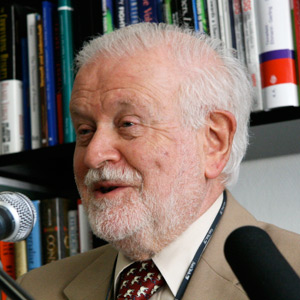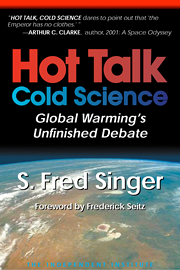“Sustainable Development” (SD) is basically a slogan without a specific meaning. Linked to Earth Day (April 22), it masquerades as a call for clean air, green energy, and suggests a pristine bucolic existence for us and our progeny—forever. But in reality, it has become immensely useful to many groups who use the slogan to advance their own special agenda, whatever they may be.
The term itself was invented by Gro Harlem Bruntlandt, a Norwegian socialist politician and former prime minister. After her term there, she landed in Paris and, together with Club of Rome veteran Alexander King, began publicizing SD. Indeed, the concept is a successor to the neo-Malthusian theme of the Club of Rome, which began to take hold around 1970 and led to the notorious book Limits to Growth. In turn, the ?Limits to Growth? concept was developed a few years earlier by U.S. geologists like Preston Cloud and King Hubbert. In a report published by a panel of the National Academy, they promoted the view that the world was running out of resources: food, fuels, and minerals. According to their views, and those of the Club of Rome and Limits to Growth, most important metals should have become unavailable before the end of the 20th century.
(King Hubbert, of course, is best known for the concept of ?Peak Oil? which achieved wide-spread popularity in the past few years. Princeton geologist Kenneth Deffeyes gained fleeting fame for his book ?Hubbert’s Peak,? which predicted that world oil production would peak in 2008. Of course, it must peak sometime, but the date will be set by economic and technological factors that are difficult to predict.)
In turn, these neo-Malthusian concerns were opposed by the so called ?Cornucopians.? Their leading apostle was certainly the late Julian Simon, who went somewhat overboard in the other direction. Many will remember Julian Simon’s famous bet with Paul Ehrlich, the noted Stanford University doomsday prophet, concerning the unavailability of minerals by 1990. Simon won the bet but he was certainly off-base in predicting that there would be no end to crude oil on this planet. Fossil fuels, of course, are essentially non-renewable. No matter how slowly they are used up, once used up, they are gone and not replenished over any reasonable time periods.
But in a certain sense this does not matter. Oil may become depleted—at least low-cost oil—but its essential function is to produce energy. And there we have a variety of ways to create energy for many millennia or even longer—based on nuclear fission.
The debate between neo-Malthusians and Cornucopians came to a head in a 1969 symposium of the AAAS, published as a book titled ?Is there an optimal level of population?? Both sides recognized that population levels and growth rates are equally important in discussing the possible depletion of resources. Those proposing larger populations, like Julian Simon, seemed oblivious also to the environmental costs that would rise rapidly as the natural ability of the environment to absorb waste is exceeded.
But all this is history. SD lives on because it is useful in selling various policies. Some examples are:
-
1) Restrictions on the use of fossil fuels, under the guise of “saving the climate”
2) Transfers of resources to less developed nations—now justified for climate reasons (but of course, quite contrary to resource conservation)
3) Striving for world government and UN sovereignty—all for “sustainability”
4) Promoting a green energy future, using a solar and wind
5) Advocating negative population growth, etc.
Among the worst policies being pushed with the help of SD is a scheme called Contraction and Convergence (C & C). The idea is that every human is entitled to emit the same amount of CO2. This of course translates into every being on earth using the same amount of energy—and, by inference, having the same income. In other words, C & C is basically a policy for a giant global income redistribution.
Since the SD concept has been popularized, it has become a fashionable topic for research papers, especially in the social sciences. We may yet live to see the day when trendy universities establish programs to teach SD—and eventually even departments of SD and endowed academic chairs. Never underestimate the drive for expansion in the academic world.
For Earth Day 2011, the National Association of Scholars (NAS), composed mostly of conservative-leaning academics, released a Statement that critiques the campus sustainability movement. NAS president Peter Wood said:
“Sustainability sounds like a call for recycling and clean drinking water. But its proponents are much more ambitious. For them, a sustainable society is one that replaces the market economy with top-down regulation. They present students a frightening story in which the earth is on the brink of disaster and immediate action is needed. This is a tactic aimed at silencing critics, shutting down debate, and mobilizing students who never get the opportunity to hear opposing views.”Here are some excerpts from the Statement itself:
“Sustainability” is one of the key words of our time. We are six years along in the United Nations’ “Decade of Education for Sustainable Development.” In the United States, 677 colleges and universities presidents have committed themselves to a sustainability-themed “Climate Commitment.” Sustainability is, by a large measure, the most popular social movement today in American higher education. It is, of course, not just a campus movement, but also a ubiquitous presence in the K-12 curriculum, and a staple of community groups, political platforms, appeals to consumers, and corporate policy.The sustainability movement arrived on campuses mainly at the invitation of college presidents and administrative staff in areas such as student activities and residence life. That means that it largely escaped the scrutiny of faculty members and that it continues to enjoy a position of unearned authority. In many instances, the movement advances by administrative fiat, backed up by outside advocacy groups and students recruited for their zeal in promoting the cause. Agenda-driven organizations-such as the Association for the Advancement of Sustainability in Higher Education (AASHE) and the American College and University Presidents’ Climate Commitment (ACUPCC)—have taken advantage of academic sensibilities to turn sustainability into what is in many cases, a campus fetish. Sustainability also gets promoted by resort to pledges, games, competitions, and a whole variety of psychological gimmicks that bypass serious intellectual inquiry.
Some results are relatively trivial. For example, at certain institutions, cafeteria trays have been banned to save food, water, and energy, leaving students and staff to juggle dishes, cups, and utensils as they move between counters and tables. Many campuses have also banned the sale of disposable to reduce plastic waste. Yet however laughable, such petty annoyances have a sinister penumbra. They advertise a willingness to bully that creates a more generalized climate of intimidation, spilling over into other domains.
In practice, this means that sustainability is used as a means of promoting to students a view that capitalism and individualism are ?unsustainable,? morally unworthy, and a present danger to the future of the planet.
Fascination with decline and ruin are nothing new in Western thought. The sustainability movement combines a bureaucratic and regulatory impulse with an updated version of the Romantics’ preoccupation with the end of civilization, and with hints of the Christian apocalyptic tradition. These are the ?end times? in the view of some sustainability advocates—or potentially so in the eyes of many others. The movement has its own versions of sin and redemption, and in many other respects has a quasi-religious character. For some of the adherents, the earth itself is treated as a sentient deity; others content themselves with the search for the transcendent in Nature.
As a creed among creeds, sustainability constitutes an upping of the ideological ante. Feminism, Afro-centrism, gay-liberation, and various other recent fads and doctrines, whatever else they were, were secular, speaking merely to politics and culture. The sustainability movement reaches beyond that, having nothing less than the preservation of life on earth at its heart.
The religious creeds of faculty members and students are their own business, but we have reason for concern when dogmatic beliefs are smuggled into the curriculum and made a basis for campus programs as though they were mere extensions of scientific facts.
The sustainability movement is, in a word, unsustainable. It runs too contrary to the abiding purposes of higher education; it is too rife with internal contradictions; and it is too contrary to the environmental, economic, and social facts to endure indefinitely.









